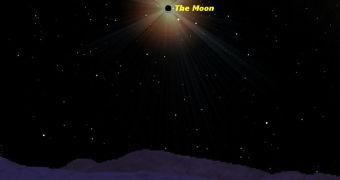A small group of people living precisely in the required area will be able to enjoy a partial solar eclipse this Friday, November 25. This will be the fourth time this happens this year alone, but the maximum number of eclipses that can take place in a single year is five.
The eclipse will mostly be visible from the Southern Hemisphere, in small portions of Namibia, South Africa, Antarctica and the South Atlantic Ocean. It will not be complete, which means that the Moon will never fully cover the entire diameter of the Sun.
The lunar penumbra will touch down in the Atlantic, an estimated 1,000 kilometers (600 miles) away from Cape Town, South Africa. When people are located in the penumbra, they see only a partial eclipse. In order to see the full thing, you have to be located in the umbra, which is a lot narrower.
According to astronomers, the Sun will rise onto the sky without a portion of its upper right rim, which will be obscured by the Moon. Only people in the aforementioned areas will be able to detect the event as it's occurring.
For everyone else, this will not be possible, as the sky will not likely be any different from the Northern Hemisphere. Also interesting to note here is that the lunar umbra will not touch down anywhere on Earth, Space reports.
At its point of closest approach, it will reach low-Earth orbit, about 340 kilometers (210 miles) above the surface of the planet. The only ones who could possibly be in the umbra at the right time are the three astronauts aboard the International Space Station.
However, the new eclipse will be significantly deeper than the other three that preceded it. The first one was visible in Europe on January 4, but coincided with the sunrise. The second one was only visible from certain locations in Alaska and Canada, on June 1.
The third solar eclipse of 2011 was only visible from the Lutzlow-Holm Bay and its surroundings, on the coast of Antarctica. Other than animals living at that location, there was no one to see the event taking place, experts say.
On Friday, people standing at a certain point near the Antarctic Peninsula, in the Bellingshausen Sea, will be able to see about 90 percent of the entire Sun get obscured by the Moon.

 14 DAY TRIAL //
14 DAY TRIAL //